Name: Rachel, Melat, Bruce
EXPERIMENT
Environmental friendly materials
1. One apple
2. Two small tomatoes
3. One hotdog
4. Baking soda
5. Salt
6. Knife
7. Scissors
8. Paper cups
9. Plastic wrap
10. Tape
11. Medical bandage
12. Papers
In the chemistry experiment, cut the apple into four pieces and the tomato into two halves, bury them in different paper cups containing salt, baking soda, and a mixture of salt and baking soda, and seal them with plastic wrap. Apples and tomatoes are naturally degradable materials and will not cause long-term pollution of the environment. Salt (sodium chloride, NaCl) is a mineral widely found in nature and is biodegradable, but large-scale mining may damage the ecological environment. The discharge of high-concentration salt solutions will affect aquatic organisms. Salt is also a good dehydrating agent, which can make food drier and more concentrated, delay the spoilage process of food, and increase its shelf life. Baking soda (sodium bicarbonate, NaHCO3) is widely used and environmentally friendly. It is an alkaline substance that can neutralize acidic substances in food and change the pH value of food. It is harmless to the environment and the human body, but it may consume energy and produce carbon dioxide during the production process. Paper cups are generally recyclable and partially biodegradable, but paper cups lined with plastic are difficult to degrade. Although plastic wrap can extend the shelf life of food and reduce waste, it is usually disposable and difficult to recycle, and harmful substances may be produced during the manufacturing and degradation processes. s are generally recyclable and partially biodegradable, but paper cups lined with plastic are difficult to degrade. The selection of these materials can help reduce the negative impact of experiments on the environment and cultivate environmental awareness, but factors such as material performance, cost, and experimental complexity must also be weighed.

Instruction
Apple:
1. Cut the apple in four pieces
2.Put one of the piece in a cup with salt and baking soda and cover, and another piece in a cup with salt and cover. The third one with the salt and baking soda but uncovered. And the last piece with salt and uncovered.
3. After 2 weeks put them out and remeasure its length, height, and weight and compare.
Tomatoes:
1.Prepare 2 tomatoes, and cut one of them in half.
2. Put the uncut one in a cup with mix of salt and baking soda
3.Put the other half in a cup with the same amount of salt and baking soda.
4. After 2 weeks put them out and remeasure its length, height, and weight and compare.
Hot Dogs:
1.Prepare an uncooked hotdog.
2.Cut the hot dog in half.
3. Put one of the half hot dogs in a cup full of salt with fully covered in it and wrap it with plastic wrap.
4.Put another half in a cup with full of baking soda also fully covered and wrap it with plastic wrap.
5. After 2 weeks put them out and remeasure its length, height, and weight and compare.
Safety operation
To ensure all members are safe throughout the experiment, each member must wear gloves when handling any of the materials used, both during the procedure and while recording observations. The lab will be located in an open and ventilated area. No external food, drink or cosmetics will be within the vicinity of the lab. After using each material, it will be returned to its designated area where it will sit undisturbed until its next use. The area used to conduct the experiment will be thoroughly cleaned after each use, to ensure no products will be left behind and the area will be safe for later usage.
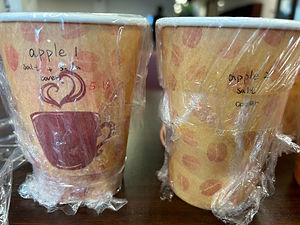

Apple group 1: add salt and soda, cover
Apple group 2: add salt, cover
Apple group 3: add salt and soda, uncover
Apple group 4: add salt, uncover




Tomato 1: cut in half, add salt and soda, cover
Tomato 2: whole one, add salt and soda, cover


Hot-dog 1: add salt, cover
Hot dog 2: add soda, cover
Experimental groups
Measurement
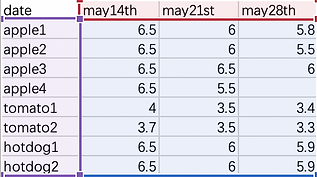
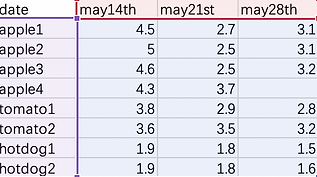
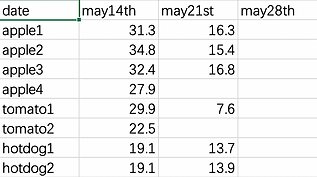
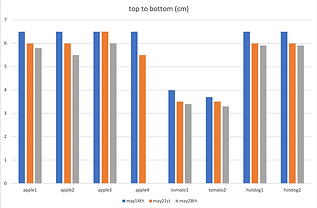


Observation
May 21st
Apple 1


Brown inside, dark outside, smaller, squishy, salt and soda becomes harder.
Apple 2

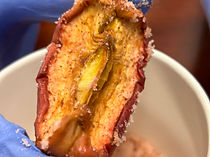
It's covered before but uncover now, wet on top, salt becomes harder, the skin is still red, the inside is light yellow, it smells like salt.
Apple 3

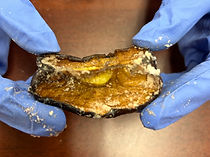
It's smelly, the salt and the apple is very wet, squishy, darker inside.
Apple 4
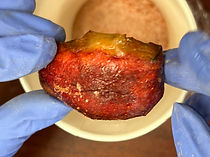

It has mold on it, squishy, smelly.
Tomato 1
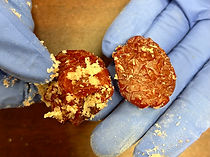
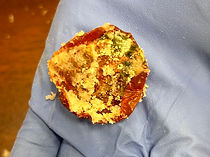
very smelly, hard, dry, no inside.
Tomato 2
no smell, red outside, squishy, looks similar as before mummification.
May 28th

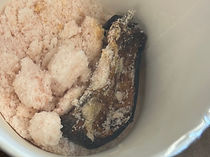
The white inside comes out, squishy, smelly, black.


red, similar as before.


more brown than apple 1.
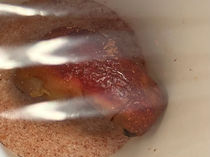
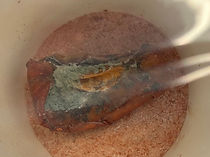
red inside, green inside.

very smelly

similar as before, really squishy, little smelly.
Hotdog 1

harder, darker, shrink, salt become harder, not smelly
Hotdog 2
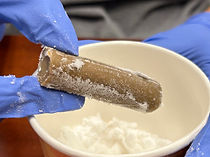
harder, turn green and brown, the soda didn't becomes harder.

smell like hotdog, really hard, the salt is hard

softer than hotdog1, green, little smelly.
References
Kernan, A. (2012, August 15). Baking Soda - Good or Bad? Kyla Kleaning. Retrieved June 12, 2024, from https://kylakleaning.com/baking-soda-good-or-bad/
Nowell, C. (2024, January 22). The disposable cup crisis: what's the environmental impact of a to-go coffee? The Guardian. Retrieved June 12, 2024, from https://www.theguardian.com/environment/2024/jan/22/disposable-coffee-cups-environmental-impact
Summers, J., & Valleau, R. (2018, February 28). Road salt is bad for the environment, so why do we keep using it? | Queen's Alumni Review. Queen's University. Retrieved June 12, 2024, from https://www.queensu.ca/alumnireview/articles/2018-02-28/road-salt-is-bad-for-the-environment-so-why-do-we-keep-using-it
Whitaker, H., & Gibbens, S. (2019, July 12). Plastic wrap saves your sandwich but pollutes the planet. Is there a better solution? National Geographic. Retrieved June 12, 2024, from https://www.nationalgeog
Education.com. (n.d.). Hot Dog Mummy. Retrieved from https://www.education.com/science-fair/article/hotdog-mummy/#:~:text=Line%20the%20bottom%20of%20the,location%20away%20from%20air%20vents
Scholastic.com. (n.d.). STEAM Halloween Project: Dehydrate Apples to Make Mummies. Retrieved from https://www.scholastic.com/parents/school-success/learning-toolkit-blog/steam-halloween-project-dehydrate-apples-to-make-mummies.html#:~:text=Using%20salt%20and%20baking%20soda,cause%20the%20apple%20to%20spoil

